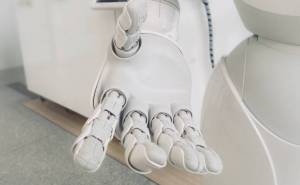
Soft Robotic Limbs? A Look into ‘Soft’ Robotics
Researchers at top universities are expanding the capabilities of robots by testing out novel ideas and liberating them from the limitations of traditional mechanical designs. They took cues from nature to create soft robotic limbs and tentacles with incredible dexterity and adaptability. These innovations may cause a sea change in many fields, from production to SAR operations. This article will look into the exciting field of soft robotics, specifically the soft robotic gripper and the snakelike robotic arm, both of which have the potential to revolutionize the field.
For the most part, rigid-bodied structures and intricate control systems have been the backbone of traditional robotics. Researchers at the Harvard John A. Paulson School of Engineering and Applied Sciences (SEAS) and the MIT Computer Science and Artificial Intelligence Lab (CSAIL), on the other hand, have taken a different approach, taking cues from the beauty of nature’s own creations.
Playing the claw game in an arcade will give you an idea of how difficult it is for robotic grippers to grasp and hold onto objects. Particularly challenging to work with are items that are either fragile or of an unusual shape. However, SEAS researchers have created a soft robotic gripper that acts similarly to jellyfish tentacles when entangled.
In order to grasp and hold heavy and unusually shaped objects, the soft robotic gripper is equipped with a multitude of thin tentacles or filaments that operate together. These strands are feeble on their own, but when joined together, they become stronger than the sum of their parts. The gripper is able to adapt to a variety of complicated objects with minimum planning and perception by capitalizing on the inherent compliance of soft robotics and augmenting it with a compliant structure.
The soft robotic gripper streamlines the gripping process in contrast to conventional robotic grippers, which rely on integrated sensors, sophisticated feedback loops, and state-of-the-art machine learning algorithms. It uses a simple inflating mechanism to produce a firm grip. The foot-long filaments vary in thickness on both sides, and are made from hollow rubber tubes. A stronger, nondestructive grip is achieved by pressurizing the tubes, which causes them to coil and entangle with one another and the object being held. Depressurizing the filaments is all it takes to free the object.
Rigid-bodied robots are difficult to maneuver, especially in tight quarters. To get around this restriction, CSAIL researchers at MIT have created a robotic arm that looks like a snake and moves like an octopus tentacle.
The robotic arm, which resembles a snake, is a miracle of soft robotics because it takes a novel method. Silicon rubber, poured into 3D-printed molds, replaces traditional mechanical components in this arm. For operations where hard, rigid robots might get damaged or get stuck, this one is a perfect fit thanks to its exceptional flexibility and resilience.
The CSAIL team has developed algorithms that allow the robotic snake arm to move autonomously through mazes of pipes. The arm is able to move its body independently of a human operator by calculating the necessary curvature for different motions. The potential uses for this skill are extensive, spanning fields as diverse as plumbing, maintenance, and even search and rescue operations.
The researchers have ambitious aspirations for the future of the snake-like robotic arm beyond its current ability to traverse inside pipelines. To further the arm’s capabilities beyond motion into manipulation, they plan to equip it with a finger-gripper that can pick up and position objects. This advancement may make it possible for the arm to carry out sophisticated jobs in fields as diverse as manufacturing and medicine.
There has been a huge advancement in robotics with the advent of soft robotics. Traditional rigid-bodied robots have limits that are being overcome by researchers as they learn to mimic the flexibility and adaptability inherent in nature. Two examples of how soft robotics might transform industries and make robots safer, more resilient, and more efficient are the soft robotic gripper and the snakelike robotic arm.
More useful applications of these technologies in areas like healthcare, exploration, and disaster relief are likely as they continue to develop. The advent of soft robotics could mark the beginning of a new age in robotics, one in which robots are able to easily navigate complicated surroundings and interact with the world in ways that mimic human behavior.
Stay tuned as scientists continue to expand the capabilities of robots, moving us closer to a world where flexible machines are commonplace.
First reported on The Washington Post





